
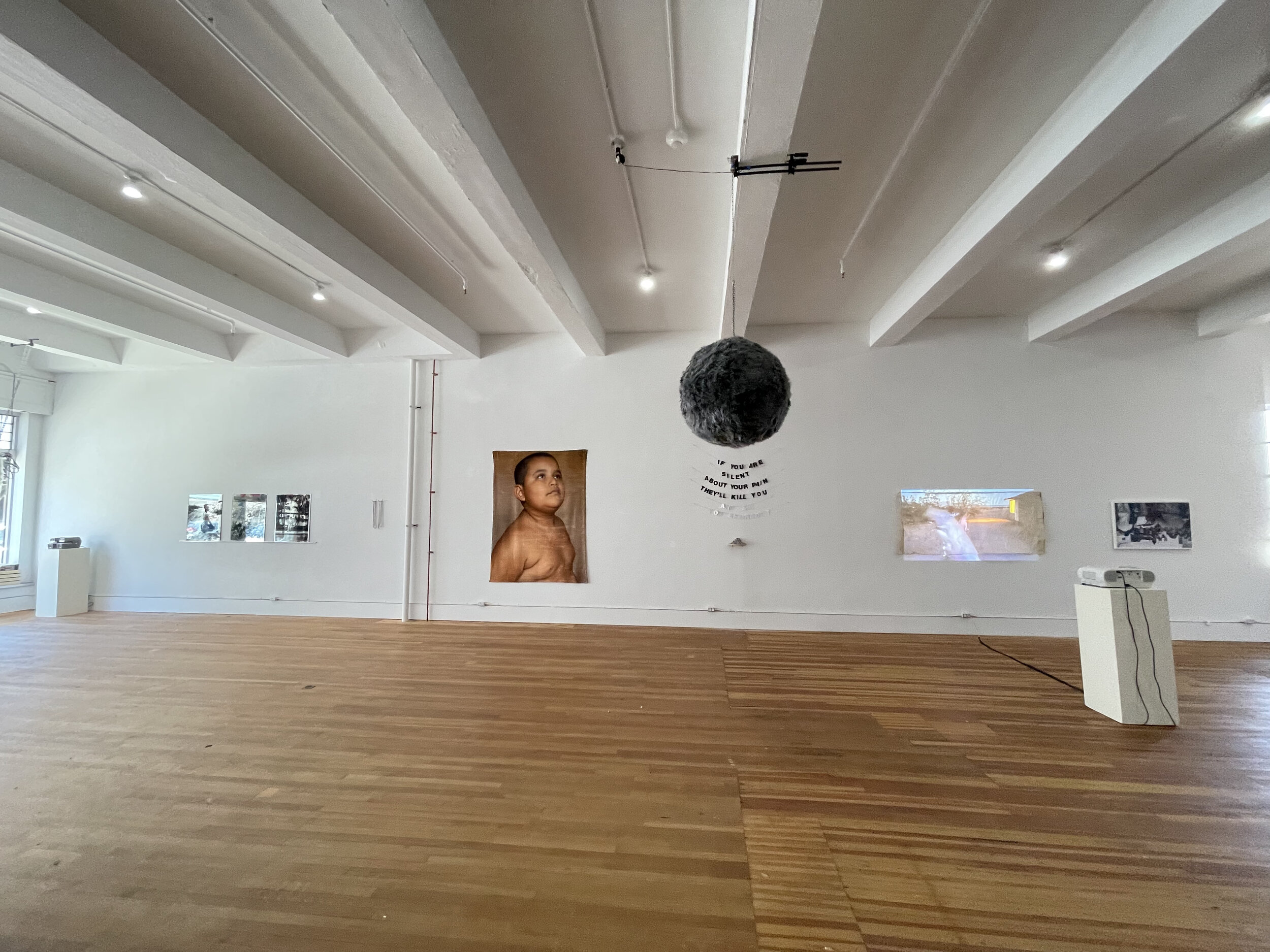
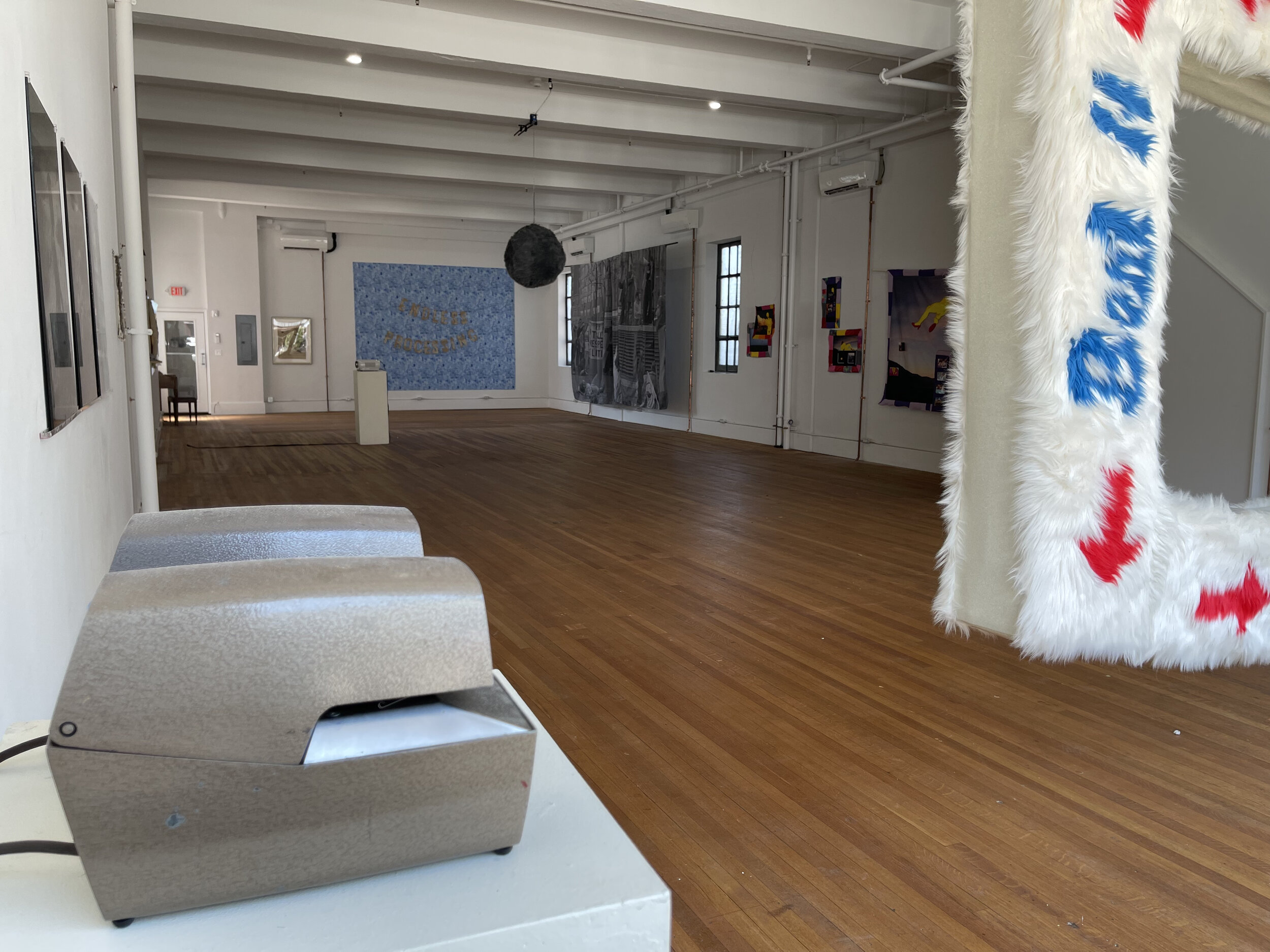
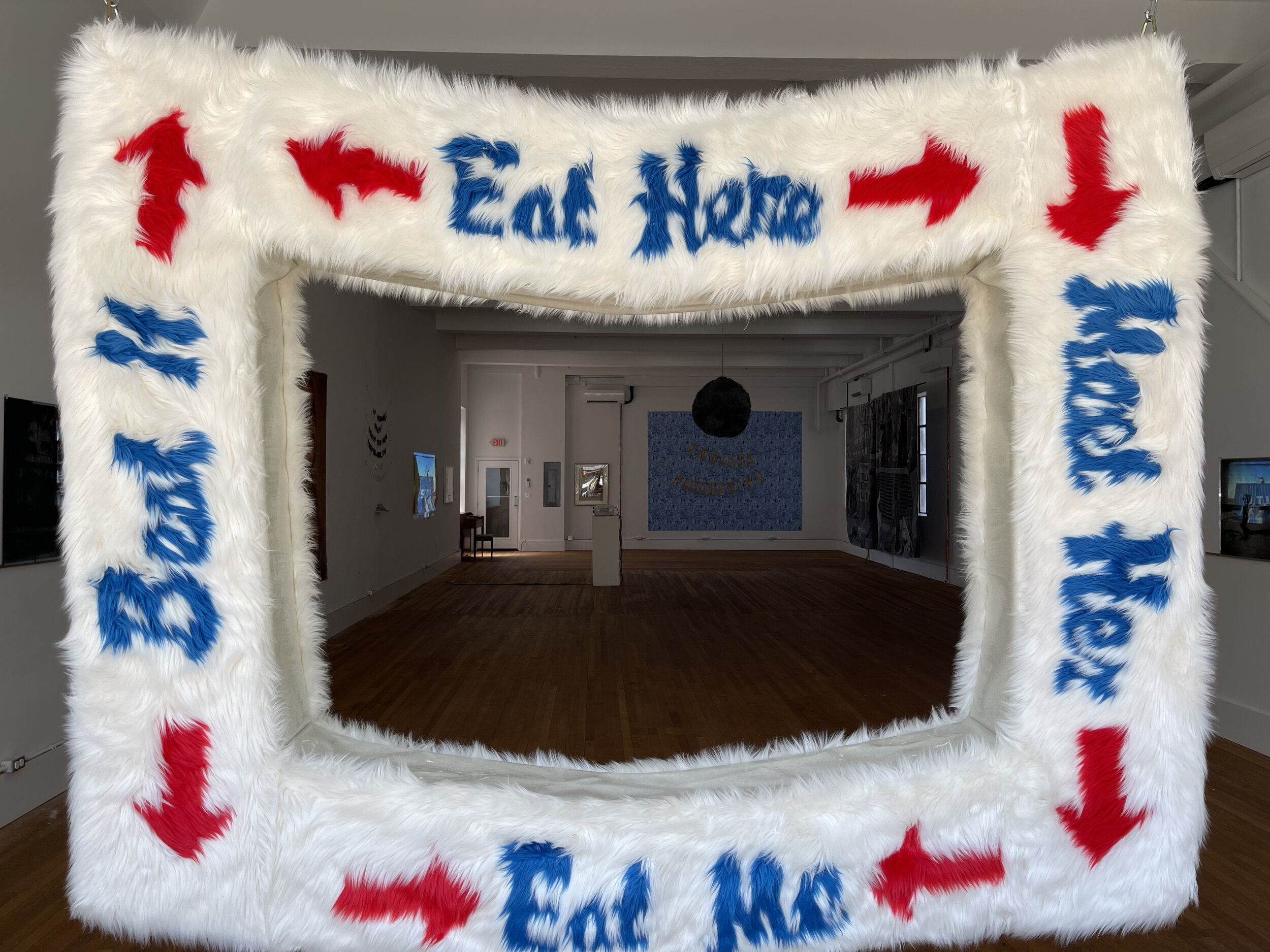
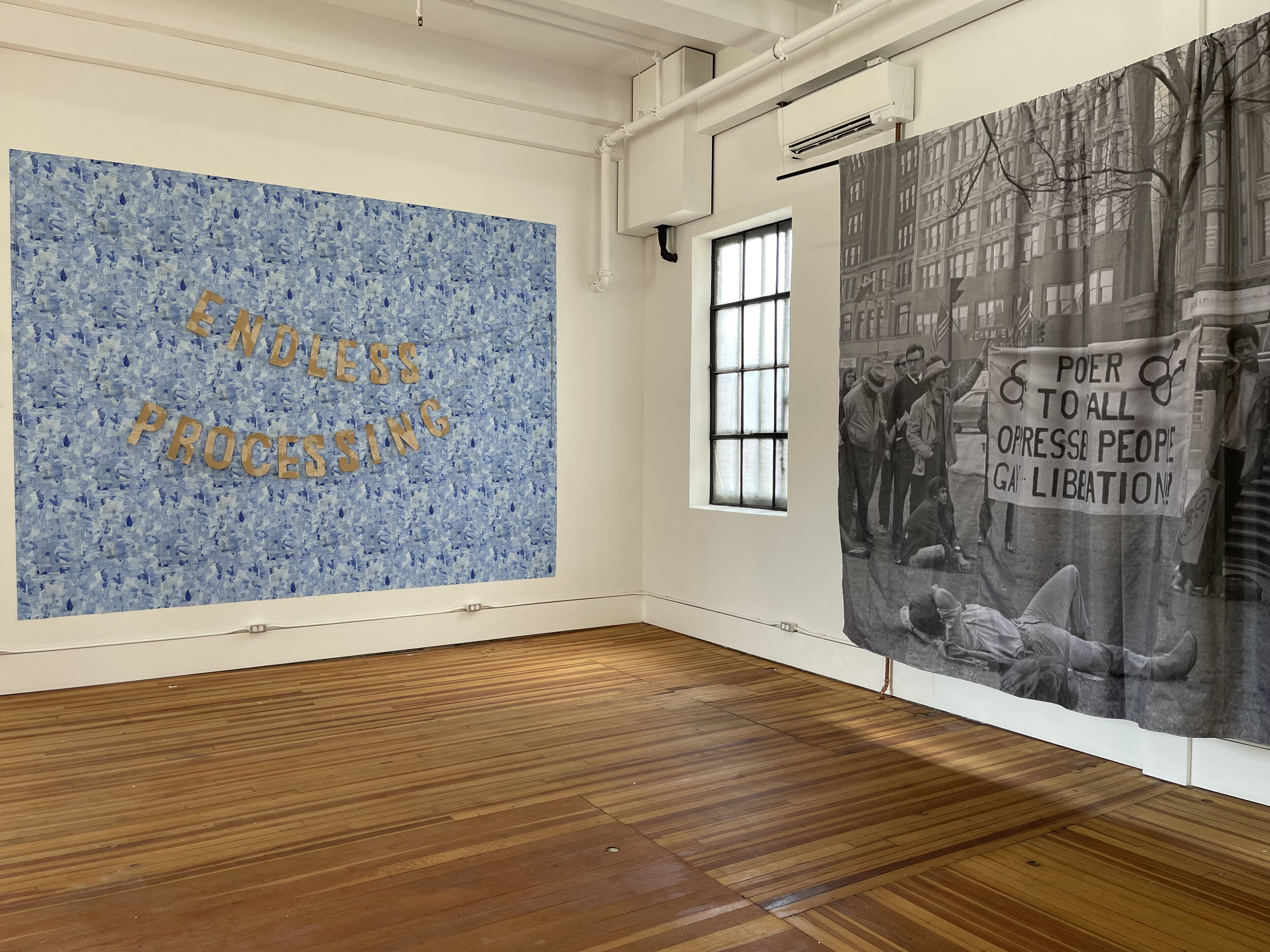
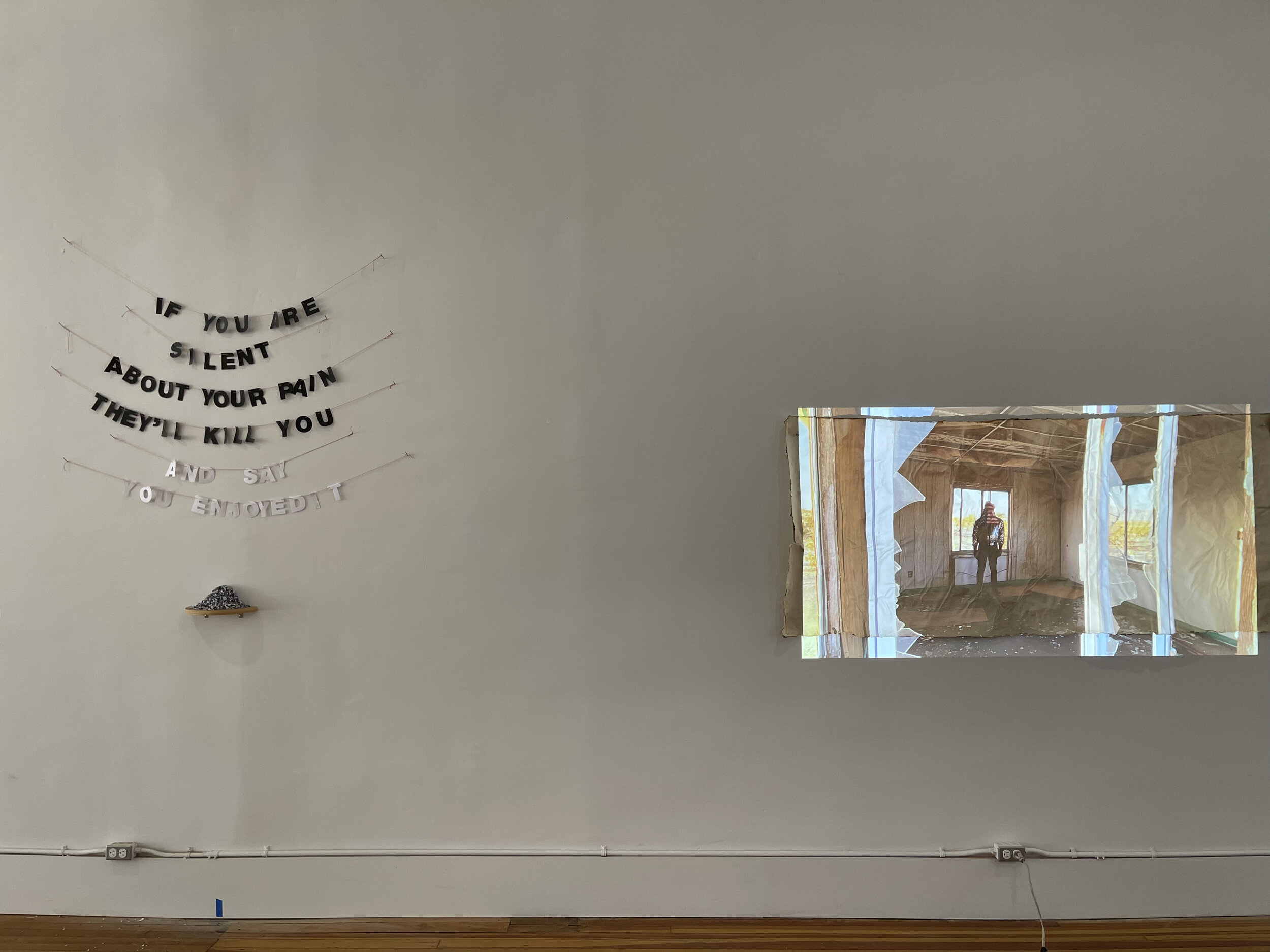
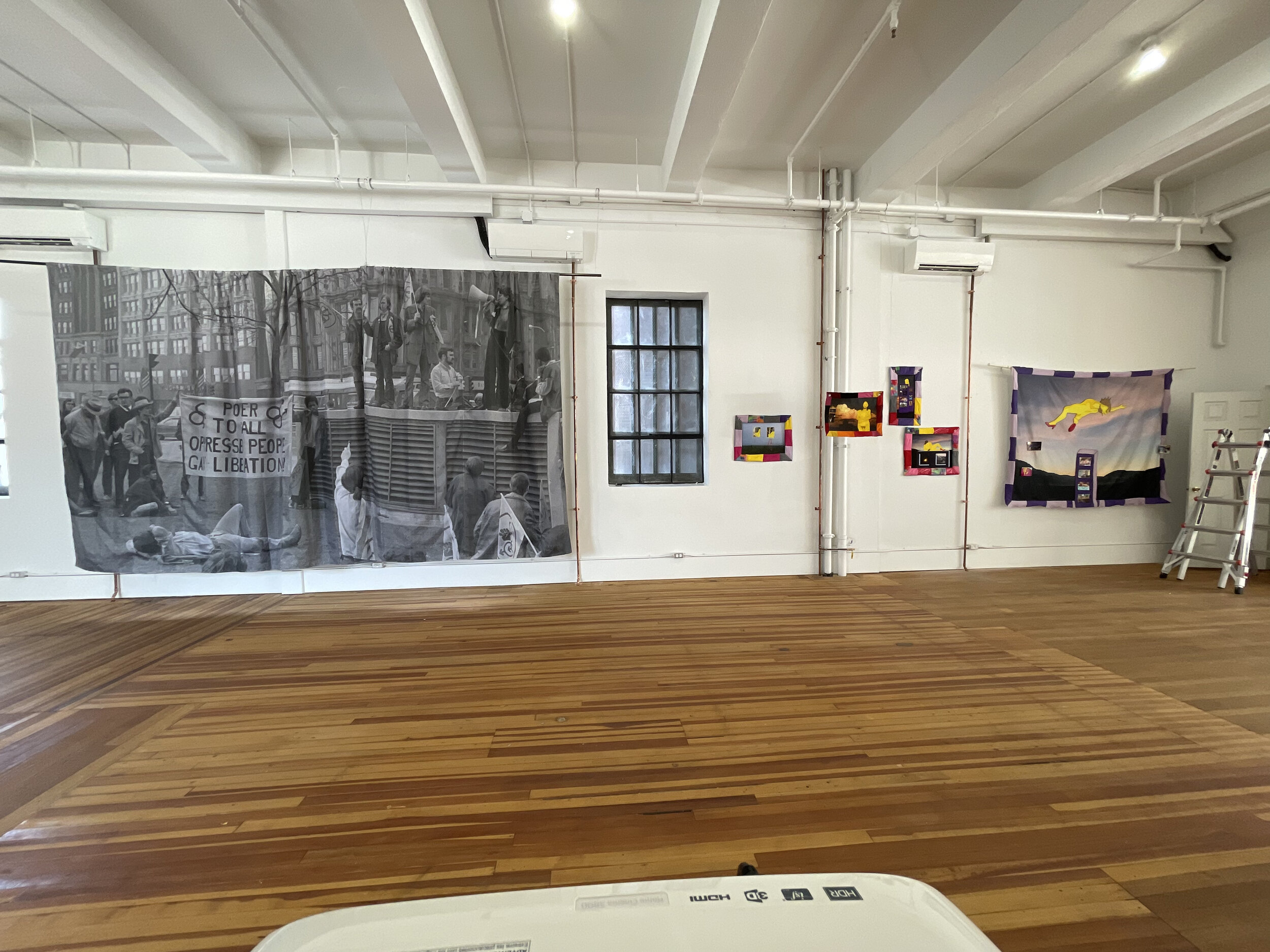
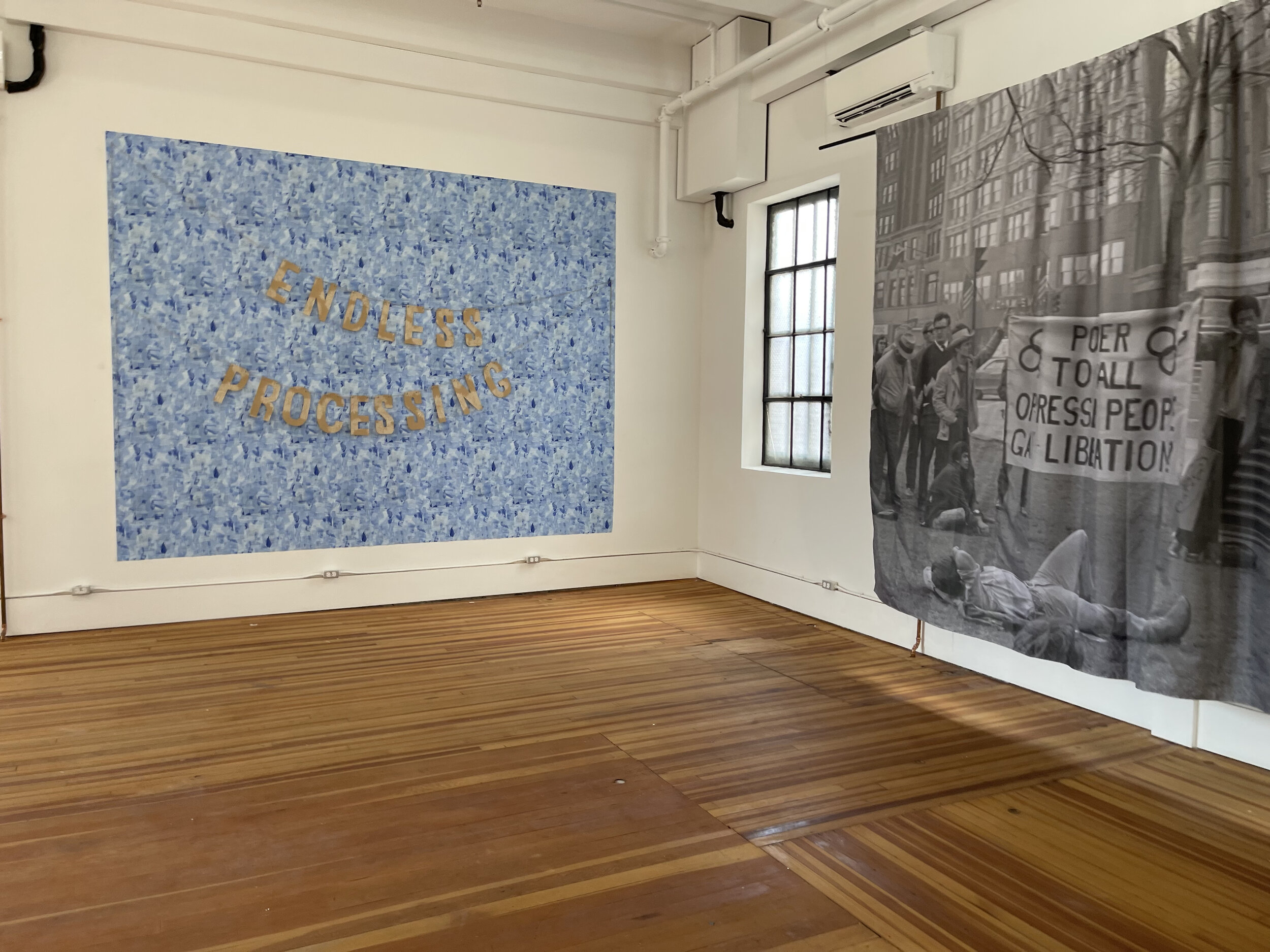
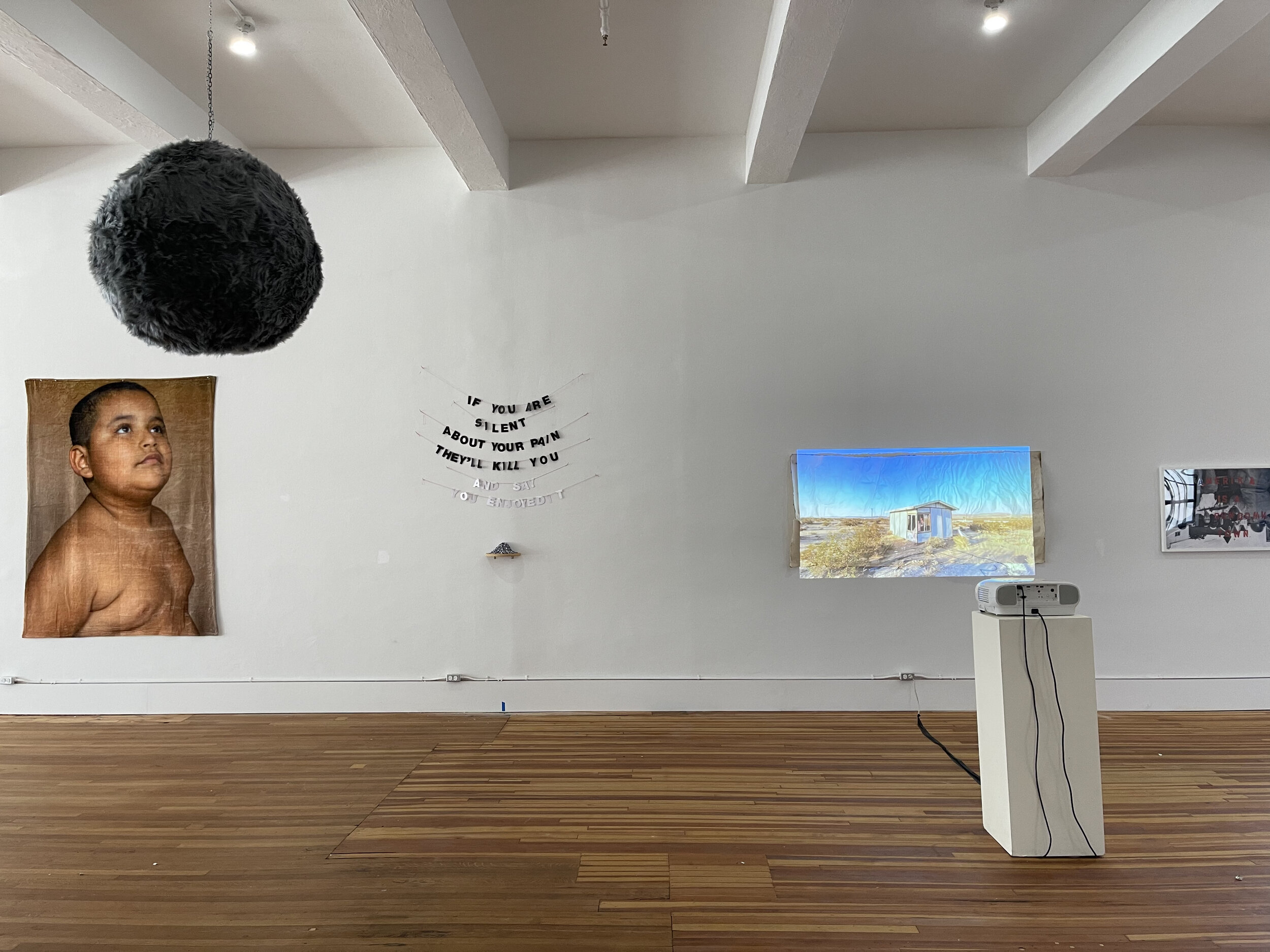
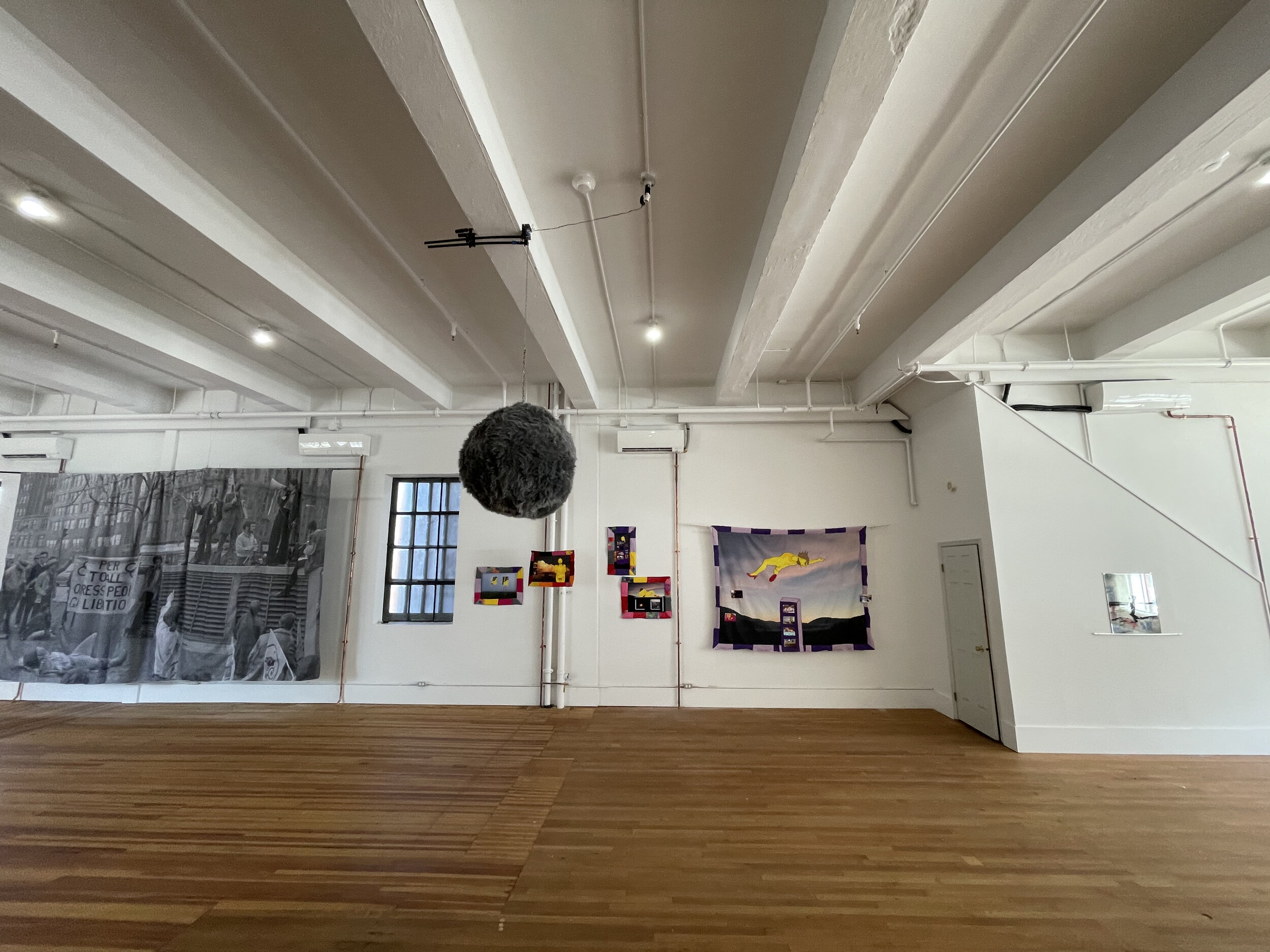
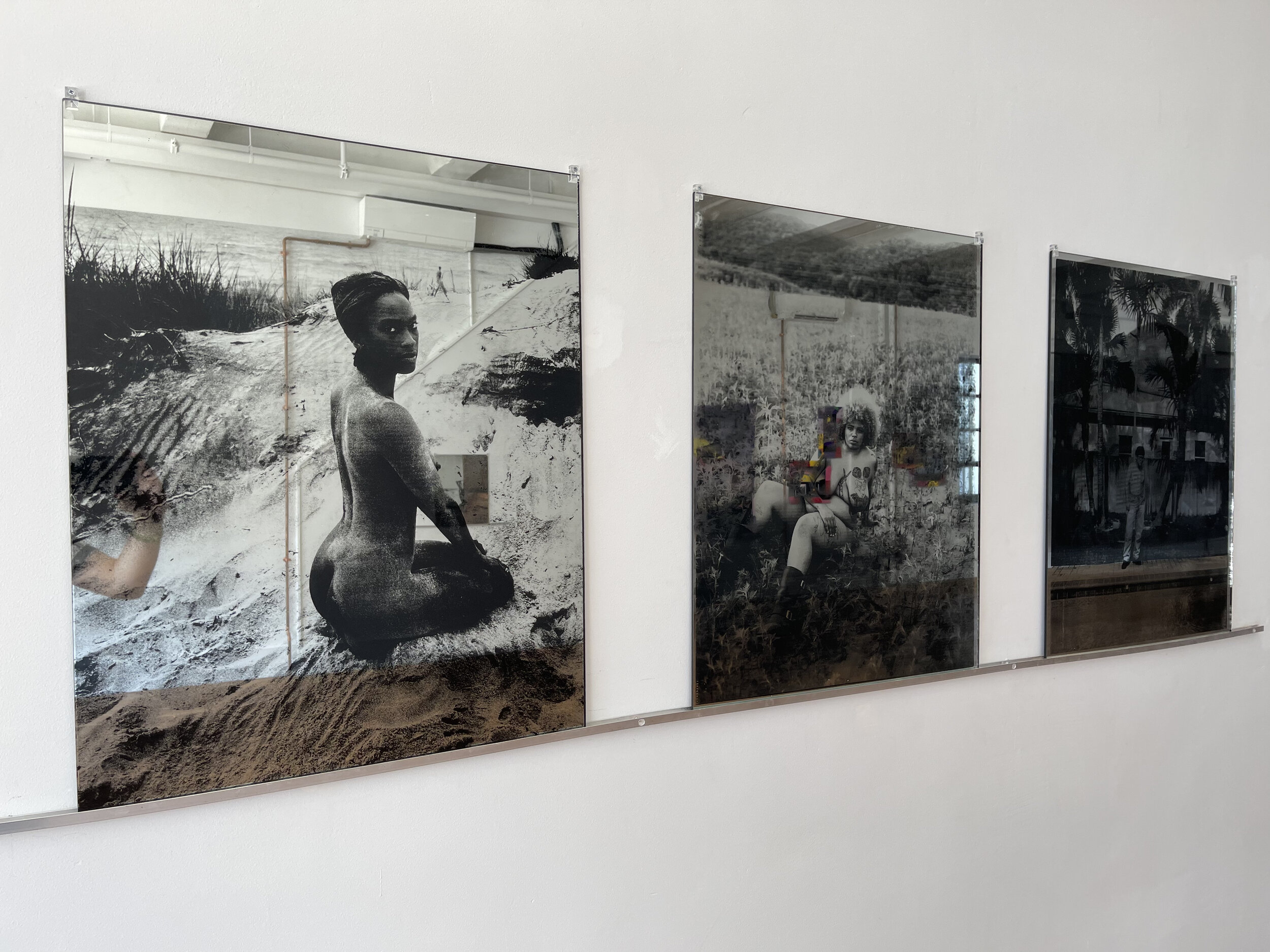
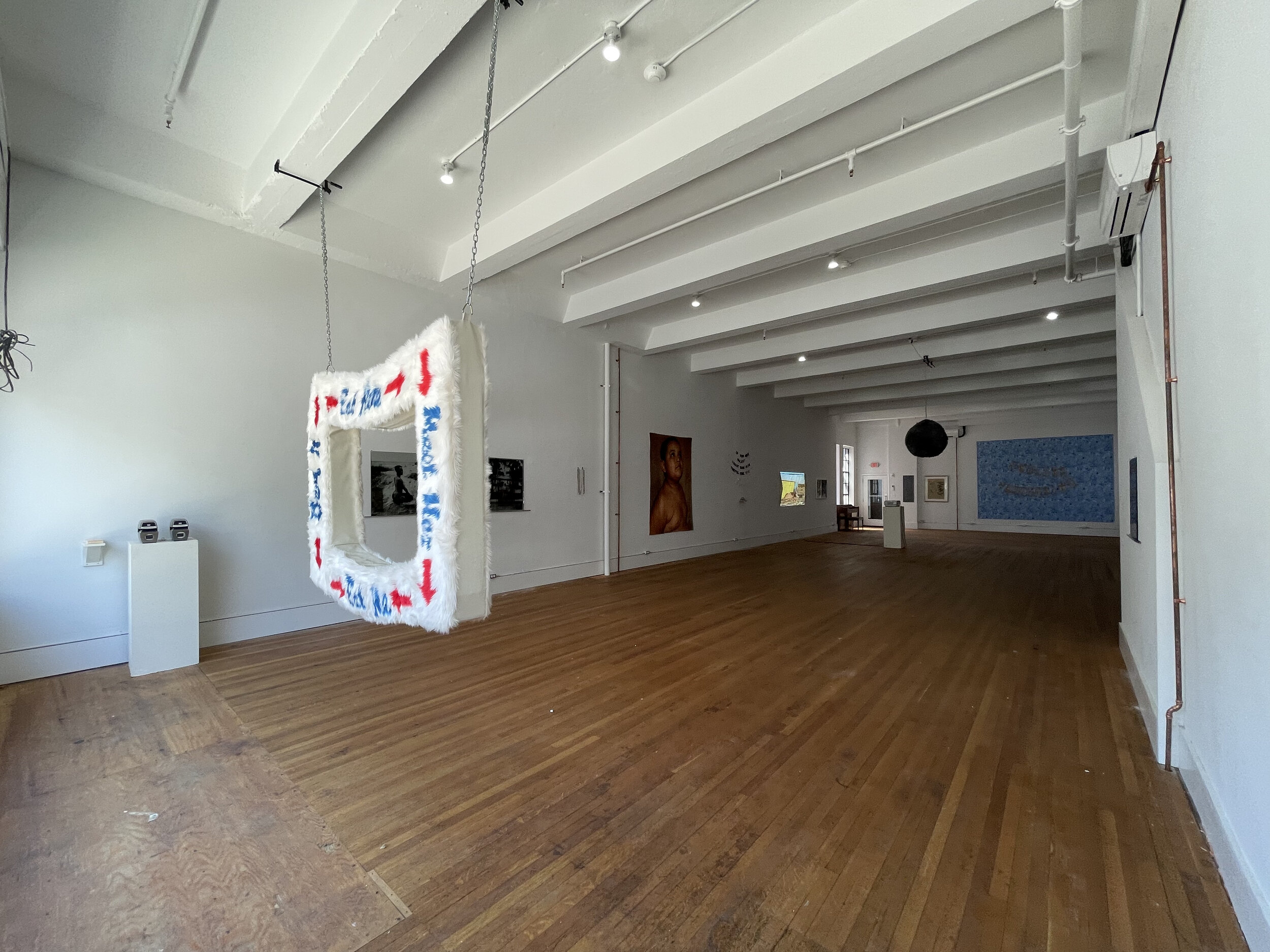
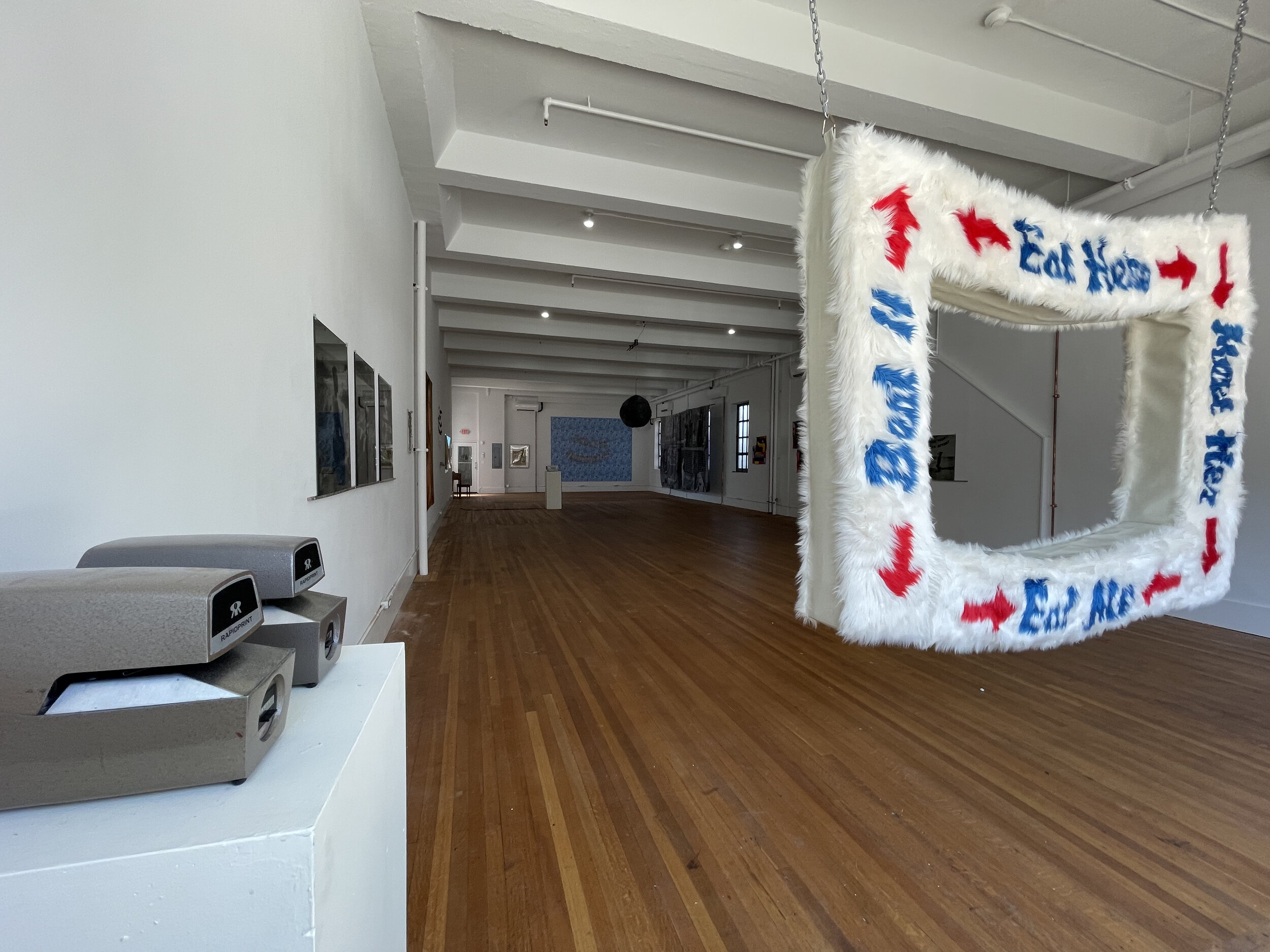
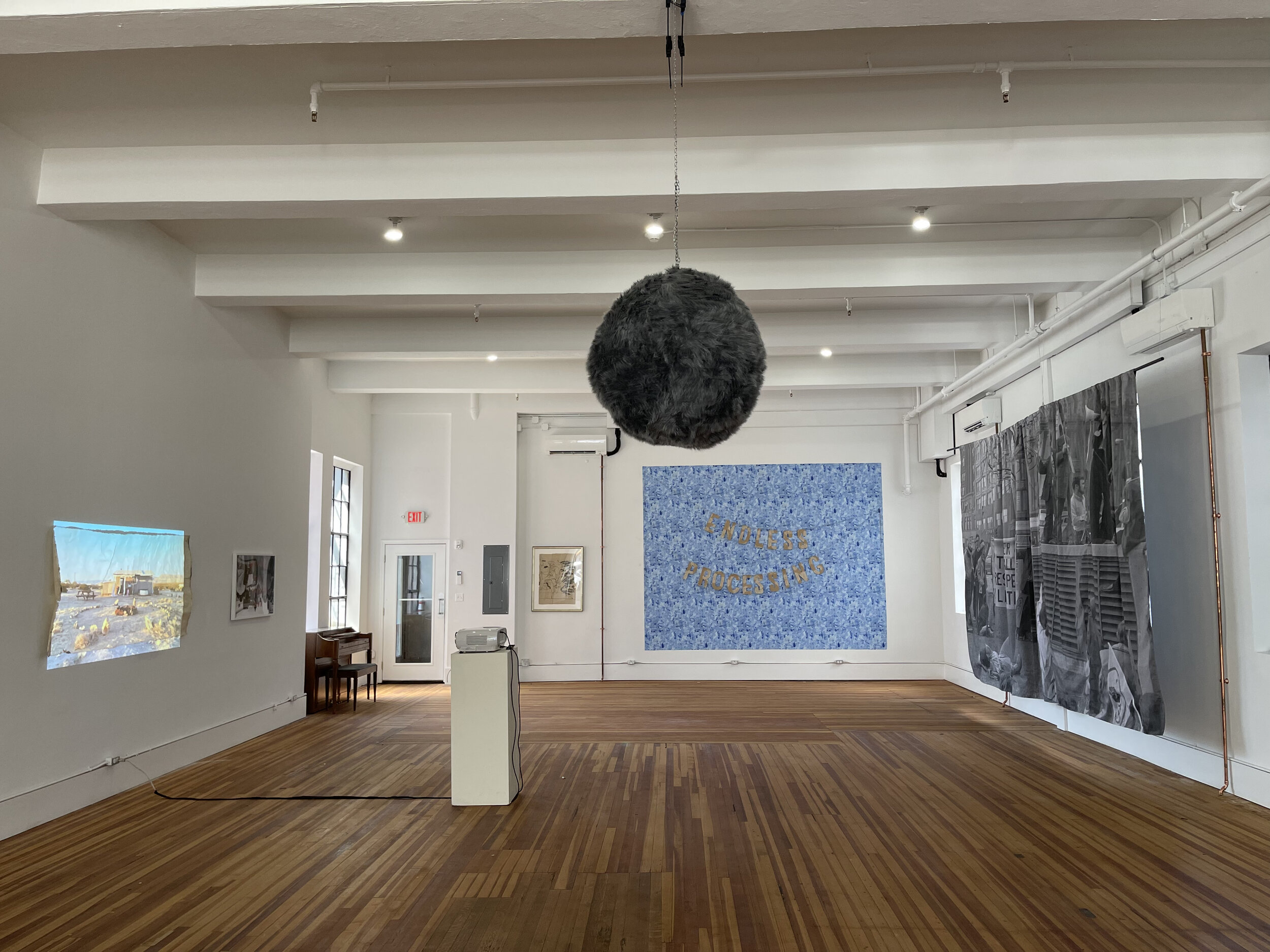
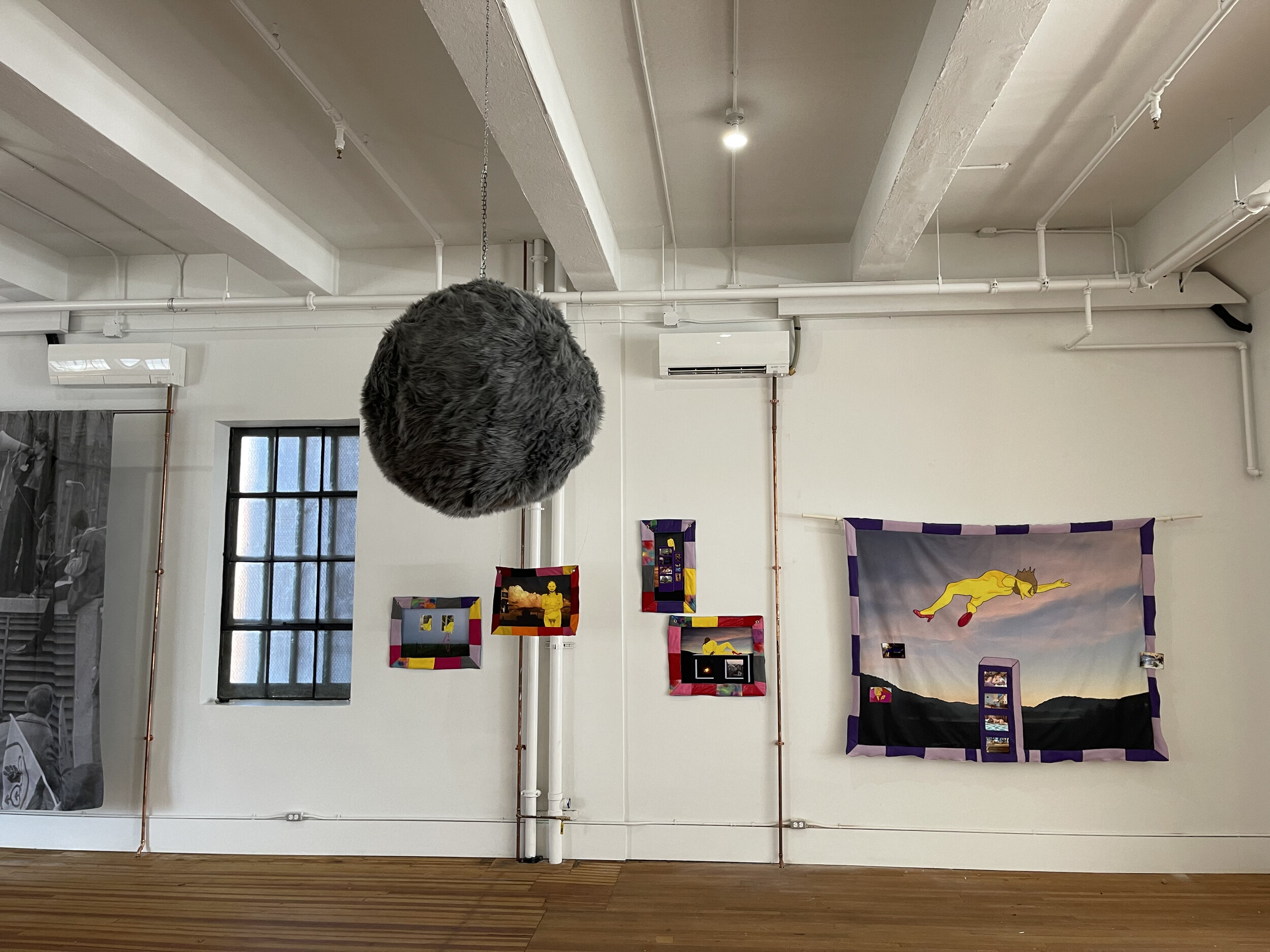
Before the After Party is a long-postponed group exhibition featuring five 2019 ACRE Residents: Amy Cousins, Charles Ryan Long, Christopher Sonny Martinez, Toisha Tucker and Zachary Hutchinson.
Co-curated by Nick Wylie, Sofia Moreno and Paula Volpato.
Closing celebration: Friday, August 27th 7-10pm
With artists, free beer, and recent Wave Farm resident, Kamikaze Jones, will be playing disco, club, and queer porn selections to dance to under the fuzzy disco ball~
Remaining open hours: Saturday, August 28th 12-8pm and Sunday, August 29th 12-3pm.
Before the After Party is one in a sea of exhibitions opening after waking from a long slumber of indeterminate postponement. At the first public Co-Prosperity opening since we started referring to the pandemic in the past tense, we see a glimpse of time travels queerer than the sticky ticking of lockdown time.
Recorded history would have us believe that homosexuals and transgender folks are modern inventions, born of ever-shifting recent language—“Inverts,” “Comrades,” “Fairies,” or wordlessly with a flip of the wrist, a bandana in the back pocket, a sly look over the shoulder. For a window of time queer life was marked by a non-participation in normative biological time—puberty, dating, living, kids, nest, retirement. By contrast, queers often had long, studious childhoods, and grew up to enjoy what might look like a prolonged adolescence—a continued participation in countercultural parties, protests and pageantry usually seen as the realm of teens and young adults tasting what it might feel like to be free. The queer refusal to leave the party at the end of the night, to go home to a normative life and sleep it off, is where the queer possibilities begin, the transient site of the After Party.
Recalling pasts that are still present, the exhibition invites us to imagine how to revere the radical legacies that haunt us while demanding futures queerer and more beautiful than the ones on offer. Charles Ryan Long sees a near future marked by the inevitable “end of white manhood” and shows us a path to an Afro futurism paved in love and rage. If you want to rage, love, come to a party where you’ll be invited to throw Toisha Tucker’s weighted confetti at sundown, be transfixed by Amy Cousins’ mammalian disco ball near the almost-lifesized protesters who brought Chicago our first queer dance party, check your look against images of queer revelry captured by Christopher Sonny Martinez, look at slide shows of what will be while containing your excitement in the bracelet you’re clutching, and at some point find a corner to drift off, wrapped in Zachary Hutchinson’s festooned blankets of the recent past. When you leave you won’t know what time it is.
The exhibition, already displaced in time, will be displaced in space as well. Launching in Chicago at the outset of summer, it will then have a second life as the first show at Co-Prosperity Catskill, a new space in the New York town where Washington Irving’s short story Rip Van Winkle was born. The antihero of the story is a colonial buffoon who takes a too-strong drink from giants and sleeps through the American Revolution. When he finally wakes up and goes to drink more at King George’s Pub, he finds that the name of the colonizing monarch has been erased.
In some ways it can be nice to imagine going to sleep one day and waking up in a world changed by revolution. There’s also the rebel’s somniphobia- fear of not being awake for Marx’s millenarian moments when we have so much rage and love to help fuel them. Could the queer future be in the gay past, though? We could just do the separatist thing of our foreparents- run away to farms and say, “wake me when it’s over, when you’re having the after parties.” Who knows- let’s dance together again, we’ll probably remember the moves.
Amy Cousins
Amy Cousins is an artist and educator from Houston, Texas living in Philadelphia, Pennsylvania. She has a BFA from the Maryland Institute College of Art and an MFA from Tyler School of Art & Architecture. Her work has been exhibited nationally at venues including Moore College of Art in Philadelphia, the Visual Arts Center at Boise State University, and the Lawrence Arts Center in Kansas. Cousins was an artist-in-residence at Illinois State University in 2018 and at ACRE Residency in 2019. She is a 2020 recipient of InLiquid’s Wind Fellowship.
Zachary Hutchingson
Zachary Hutchinson (b. 1991) is an artist living and working in Chicago IL. Hutchinson came to Chicago in 2010 to attend school at the School of the Art Institute Chicago where she earned her BFA in interdisciplinary arts in 2015. Hutchinson continued her education at the University of Illinois - Chicago earning a MFA in moving image in 2017. She has shown work globally in places like Montreal, Mexico City, San Francisco CA, NYC, Los Angeles CA, Portland OR, Austin TX, Berlin Germany, Athens Greece, Glasgow United Kingdom, Iceland, Venice, and extensively in Chicago IL. She is currently an adjunct professor at UIC and was recently listed as one of the Chicago Film 50 for the 2020.
Charles Ryan Long
charles ryan long is a Chicago born and based interdisciplinary maker and shaker. He uses varying mediums as pathways to making works that seek to pierce through our current realities making way for futures not yet imagined. His works seek to prod the viewer/ participant into dialogues that make visible both our personal and communal roles in what comes next.
Christopher Sonny Martinez
Christopher Sonny Martinez is a filmmaker and photographer born and raised in Oak Cliff, Texas. Martinez has lived and produced work in Chicago, IL, New York, NY, and Dallas, TX. Martinez’s work breeds intimate moments from a Queer Chicano lens.
Toisha Tucker
Tucker is an interdisciplinary conceptual artist and writer. Their work explores three often-overlapping veins of critique. They use art as a mode of cultural organizing illuminating social constructions of gender, race, and identity. They posit incisive critiques of contemporary and historical events of Western society. They delve into the anthropomorphic relationship between technology and humans, contemporary dystopia and human empathy. Their practice is process and research based and manifests through text-based prints, photographs, video, performative pieces, sculptural installations, analog and virtual physical labor, crafting, repetition, and other media that aim to directly engage with the body. Tucker’s work reflects their deep desire for precision in material, firsthand experiential evidence, and fabrication that conveys these elements. Many of the pieces are ongoing and mutable. Tucker resides in the Bronx with their partner, a thriving aloe plant named Wednesday and a fiddle leaf fig named Newton.
